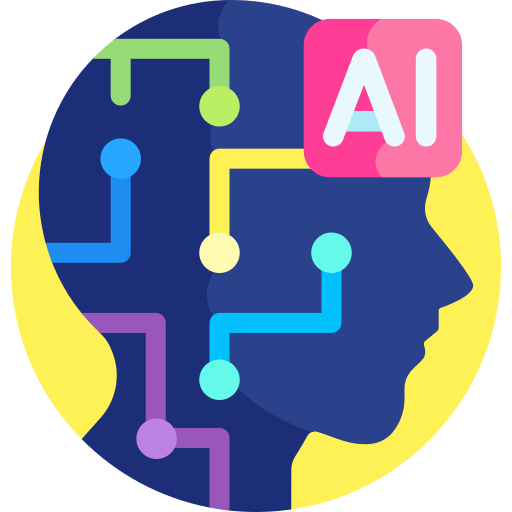You might have possibly come across many emerging businesses adapting to, or thinking of adapting to Digital Transformation and probably lost track of what digital transformation journey actually is.
In the simplest terms, Digital Transformation (DX) is the process of aligning your business products, needs and strategies with computer-based technologies that significantly affect its operations and value of delivery to its customers.
As per Gartner*, over 91% of businesses are practising some form of digital transformation initiative, and 87% of senior business leaders are prioritizing Digital Transformation.
Digital Transformation strategy was already in its initial stage before 2020 and it has only accelerated tremendously since. From optimal carrying out of business operations to providing proactive customer satisfaction, businesses across the globe have been leveraging digital transformation operating models as a winning formula for their growth.
In his blog, we’ll explore 4 Key Aspects of Digital Transformation out of all the DX aspects you might’ve bumped into on the internet to help you guide through YOUR business’s winning formula!
- Digital Transformation- A Driving Force
- Digital Transformation in India- 2023
- Digital Transformation- Key Trends in 2023
- Measure ROI On Digital Transformation
Digital Transformation- A Driving Force
Technologies for these transformations vary based on the organization’s specific needs. Although there is no denying that technology is a key enabler when it comes to digital transformation projects, it is imperative to focus more on letting go of outdated processes and utilizing new tech all the while embracing innovative business models.
Digital Transformation in India- 2023
Although the software industry has existed in India for around 20 years with continuous research and development in technological fields, with the internet boom since 2020, India will probably witness an impetus to become digital-ready and set a useful benchmark for the rest of the world to followtheDigital transformation trends.
As per Statista, in 2022 India reflected a Digital Competitive score of 63.93 based on how it was able to adoptdigital maturityand advancements, primarily in enterprises and government organizations while Denmark, Sweden and USA were in the top 3 with a score of 100, 99.81 and 99.80 respectively.
Digital Competitiveness Ranking in Different Countries- as of 2022
As the economy heals from the scars of the Pandemic, 2022 saw a tremendous growth in ‘Digital Payments’ in the first month of the year. According to the RBI, online transactions showed a growth around 54%.
To cite a real-life example of digital initiatives , we are most likely to not carry a wallet or cash to buy daily household items, as we are adapted to and accepted all types of digital payments.
Digital Transformation is a necessity as India enters the advanced stage of what is said to be the fourth industrial revolution, that primarily includes AI. It is imminent to adapt your digital business transformation, and shape them in a way to be competent in terms of agility, speed and culture-shift for long-term sustainable growth.
DX Success Story in India – Digitizing Healthcare Sector
Ayushman Bharat Digital Mission (ABDM) is one of the most shining examples of India embracing Digital Transformation success with an aim to make an impact for every Citizen of India.
ABDM aims to integrate digital advanced technology with the health infrastructure of the country to bridge the existing gap among different stakeholders of the Healthcare ecosystem through channels. Under this program, individuals can connect, save, and access their medical records, creating a comprehensive record of their health history, enabling physicians to give more accurate diagnoses and care.
As of Dec 17th, 2022, Over 4 crore health records of citizens were digitized and linked under Ayushman Bharat Digital Mission (ABDM). To know more about this initiative, please visit https://abdm.gov.in/
Digital Transformation- Key Trends in 2023
Now, looking at the future, let us study some key trends that might shape the future of Digital successful Transformation in 2023 and beyond.
- Low-Code:
Low-code platforms are designed to enable businesses of non-technical background to build and deploy software applications. Businesses can create custom solutions without any coding knowledge as the application provides graphical user interface (GUI) and drag-and-drop tools to design the same.
Low-code platforms are instrumental in reducing cost, time, risk and scalability, which is why more and more businesses have been adopting them increasingly in recent times.
These solutions can help businesses know if their digital products will be effective in the marketplace.
- Virtual Business Collaboration:
The Digital Revolution since 2020 encouraged businesses to aggressively adopt digital technologies and increase their investments in digital software that aims to facilitate virtual collaboration be it team or document collaboration tools.
We can foresee huge investments to be made in creating an ecosystem where virtual collaboration will be prioritized to boost businesses decision making and implementing processes.
- Automation
Around 80% of business owners say they are prioritizing remote work processes and utilizing automation tools to eradicate time consuming tasks like internal procedures- that requires human efforts. These tools have the potential to improve productivity, customer service experience and digitizing business operations.
One of the great hacks to start off with this method is by selecting the right automation tool as per your business strategies process to get faster results with lesser coding skills.
There are no signs of automation techniques slowing down anytime soon, which is why you should adopt a digital business model to reduce errors and save your employees valuable time from performing hectic schedules.
You can start by introducing automation tools like: Robotic Process Automation (RPA) to perform repetitive internal operation tasks like onboarding, managing payrolls and data entry or Low-Code/No-Code Platforms to empower you team to design and code-write intuitive interfaces.
- Artificial Intelligence and Machine Learning
Your customers no longer identify your business’s efficiency and speed as a bonus but rather as an expectation in every imaginable encounter and business environment. And for this, Artificial Intelligence and Machine Learning can undoubtedly go above and beyond the limits of your human team alone all the while amplifying their efficiency, productivity and customer relationship management.
These are the most important technologies to facilitate Digital Transformation Framework. AI can help in giving insights about customer expectations and behavior, demographics and their current demands. ML aids in using these data to create personalized products and services for their customers.
- Everything as a Service (XaaS)
Many organizations are making their way to ‘Public Cloud’ to access information anytime and anywhere due to which cloud-native applications and technologies are in demand with better scalability and outputs for organizations.
Mirroring the development, companies are also shifting to ‘Everything as a Service’ (Xaas or Saas) which means their value- products and services will be available in the form of ‘Cloud-based’ subscription services. Everything from security services to storage and communications will be digital.
Measure ROI On Digital Transformation
Quantifying success, which in this case is quantifying Return on Investment, is imperative for digital transformation efforts. A company should go to the market considering it will emphasize primarily on projects with long-term value rather than chasing the ones with a short pay-off.
Like you may focus on running a business with a fully functional mobile phone application instead of just merely revamping the app. Mere implementation of technology won’t be sufficient, the technology must be monitored continuously with key performance indicators.
Ask yourself if you are taking risks. Set primary metrics in advance.
Conclusion
As the transformation takes place at an exponential rate with the introduction of 5G and other technologies in the picture, organizations across the country are putting together the resources needed to reinvent their business projects, creating new prospects for market growth and addressing crucial societal needs. One can imagine industries like- manufacturing, agriculture, health and mobility to be a part of this transformation.
Taking a step forward with emerging technology can uplift your business to create something new that benefits people around the world. So take that big step and experience the exciting times we are living in that are full of opportunities with digital platforms.





















